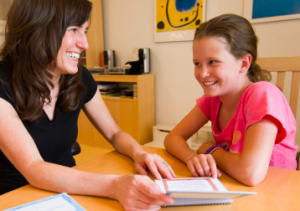Join us next Tuesday, October 7th at 6:30 with Karina Black, Skills for Life OTR/L!
Being organized is about more than colorful filing systems. Whether managing time, self or materials, each person ultimately must develop a system that works for his or her brain.
Join Skills 4 Life Occupational Therapist Karina Black OTR/L to see tools and learn techniques to help your child find ways to get and stay organized in a way that works for them. We’ll discuss how students can create an efficient study space, an effective paper flow system and see examples from files to lockers and backpacks. We’ll also explore tools to help develop self-management skills – from special clocks (to help children internalize the sweep of time), to planners and other prioritizing systems. We’ll focus on the habits that will make the greatest difference in their education and beyond.
TOPIC: The Organized Student
DATE: Tuesday, OCT 7
TIME: 6:30 – 8:00pm
PLACE: Mackintosh Academy BOULDER CAMPUS
6717 South Boulder Road
Boulder, CO 80304
RSVP: amy@mackintoshacademy.com
If you want to learn more right away, here are a few tips from an article by Karina Black, OTR/L first published on her blog skills4lifeot.org
“Getting organized” is more than eliminating clutter and creating neat storage systems. One of the most important areas of organizing is task management. It’s never too early (or too late) to teach kids how to get and stay organized with schoolwork. The skills they learn now will carry over into high school, college, and ultimately, their careers and home management as adults.
Establish a great homework routine
With your child, determine the best time for daily schoolwork and stick with it. For some kids, it will be right after school. Others may need some downtime to play, and then it’s time to hit the books. The most important thing is to stick to the schedule so your child knows what’s expected.
Set up the space
Have a designated study area, such as the dining room table. Allow for some flexibility such as moving to a rocking chair for reading chapter books. Create a school supply box and keep it well stocked with supplies (paper, pens, pencils, crayons, scissors, glue, ruler, sticky notes, calculator, etc.) so kids don’t have to keep getting up for supplies.
Make sure you know what’s going on at school
Instruct children to unload their backpacks as soon as they come home. Have them hang up their bags in a designated area (try a coat rack, pegs on the wall, or a wicker laundry basket near the front door). This allows for easy access the next day. They should bring homework to the designated study area. Check in each day so you’re aware of their workload and take special care when they seem overwhelmed.
Encourage the use of lists and planners
The older kids get, the more homework and activities they’ll have. Teach them to manage their tasks with the use of simple lists or a planner of some sort. Office supply stores sell ones with cute kid-friendly designs, or use computer lists (or even PDAs) for techie kids. When they learn of upcoming assignments, tests, or events, they should write them down in their planners.
Encourage color-coding.
Color affects our mood and memory. Let kids pick the colors of their folders and notebooks to correspond to different classes. If green reminds them of science, then they’ll know instantly to grab the green notebook when looking for their science notes.
© 2011 Articles on DemandTM
You can learn more about strategies and workshops on Karina’s Blog, at skills4lifeot.com including this article featuring 10 organizing tips for parents.

